Here are 6 easy ways to reset your Windows 11 sound settings
How to Reset Sound Settings in Windows 11 in 6 Easy Steps
Here are 7 different ways you can reset sound settings in Windows 11 depending on the issue you are currently facing. let's start.
Method 1: Reset app sound and volume settings
Press the Windows i keyboard to open the Settings app. Now click on "Sounds" on the right.

Scroll down and click "Volume Mixer".
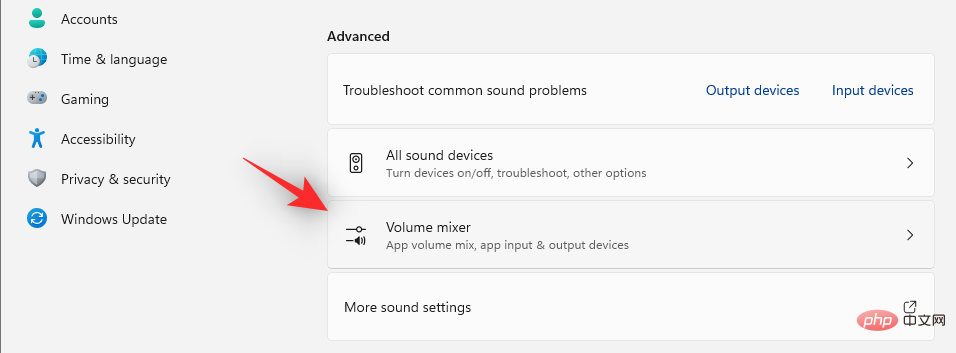
Now click "Reset" at the bottom.
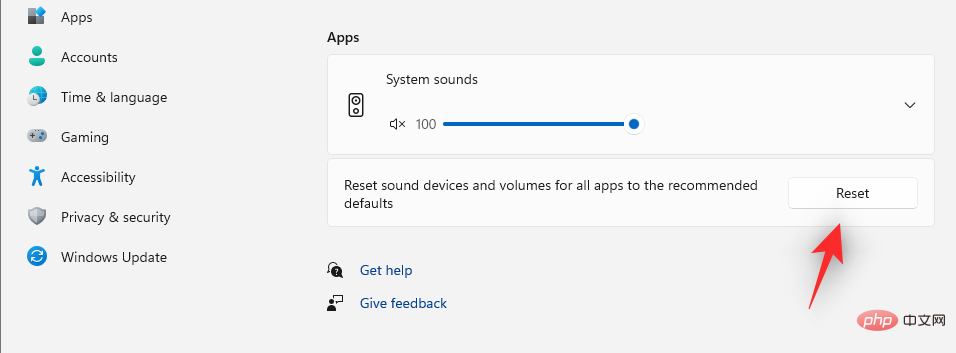
#This option will reset all settings for third-party applications and pre-installed programs to their default settings.
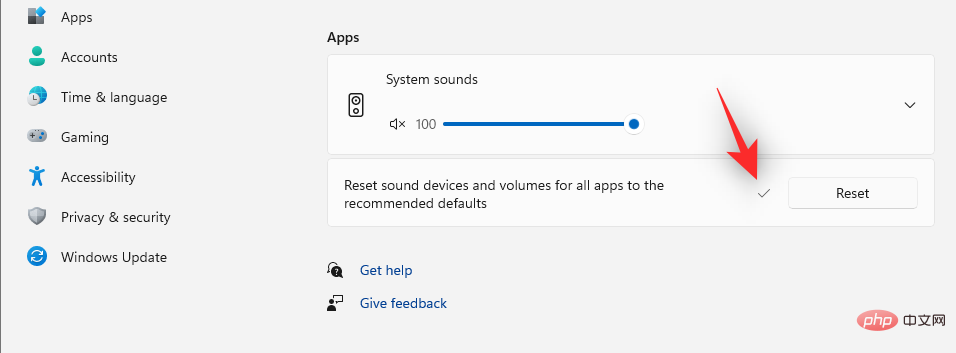
If you are experiencing audio input or output issues when using any of these applications, it is time to fix them on your PC.
Method 2: Troubleshooting the Audio Driver (2 Methods)
If you are unable to fix the audio for your system, it may be time to reset your audio driver. You can do this by reinstalling the latest version or rolling back to a known version that previously worked on your system. Please follow one of the tutorials below to help you through the process.
2.1 – Reset your audio driver
Press the Windows x keyboard and select “Device Manager”.
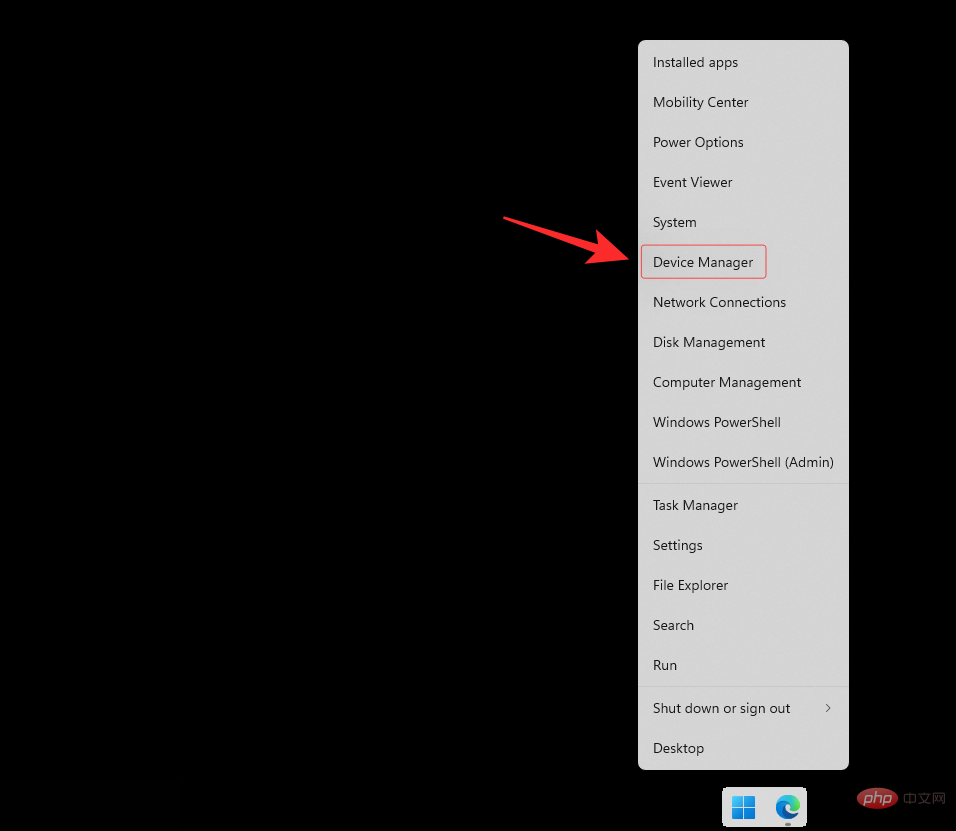
Now expand the "Sound, Video, and Game Controllers" at the bottom by double-clicking it.
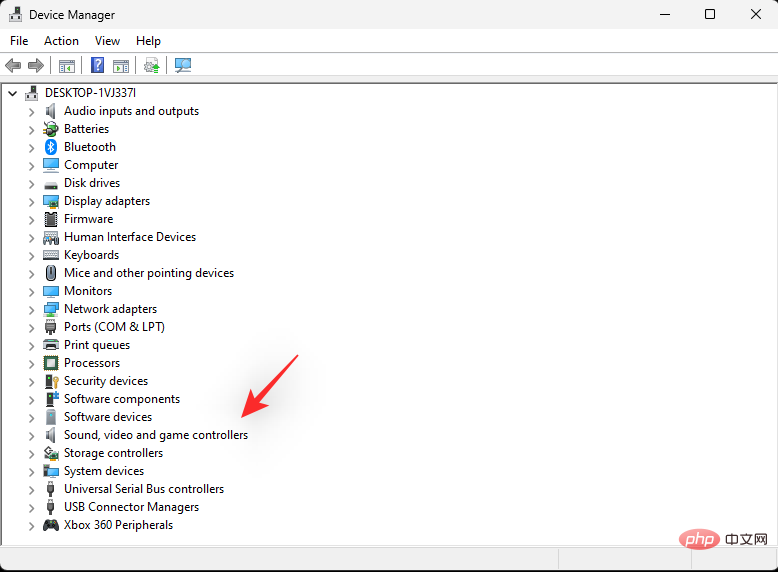
Double-click the audio adapter you are having trouble with.

Click and switch to the Drivers tab at the top of the screen.
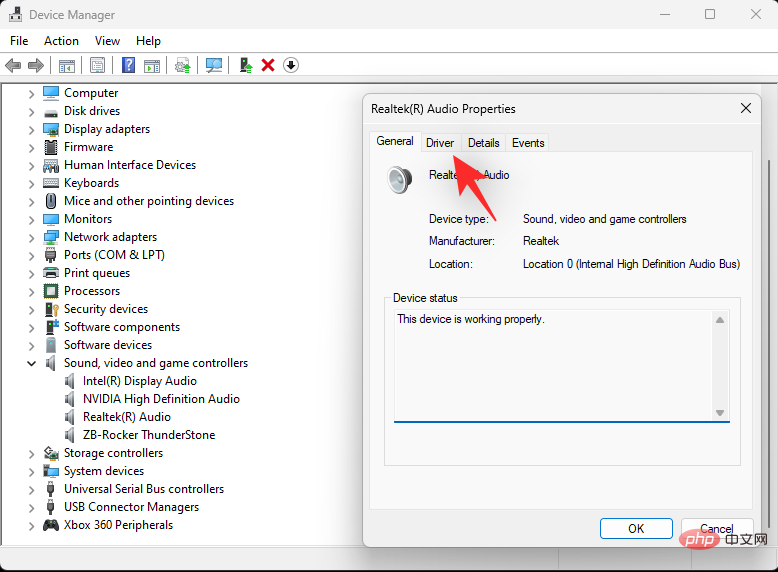
Now click on “Uninstall Device”.
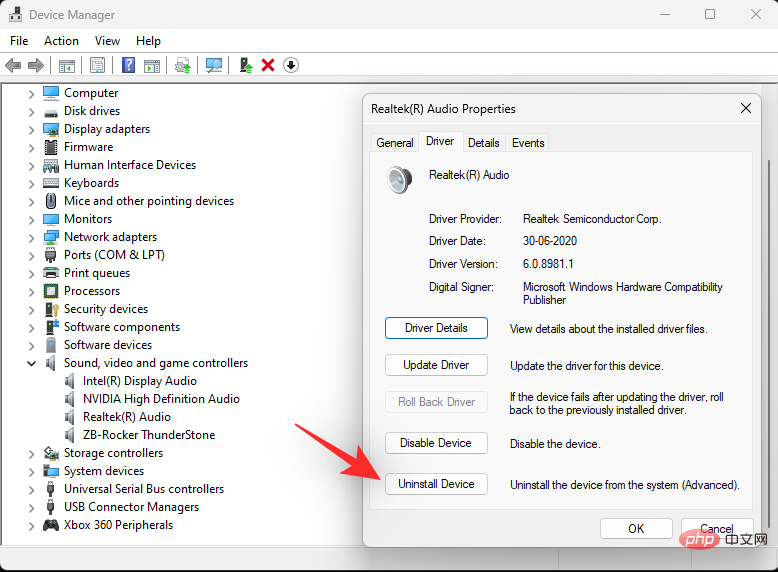
Select the "Attempt to remove the driver for this device" checkbox.
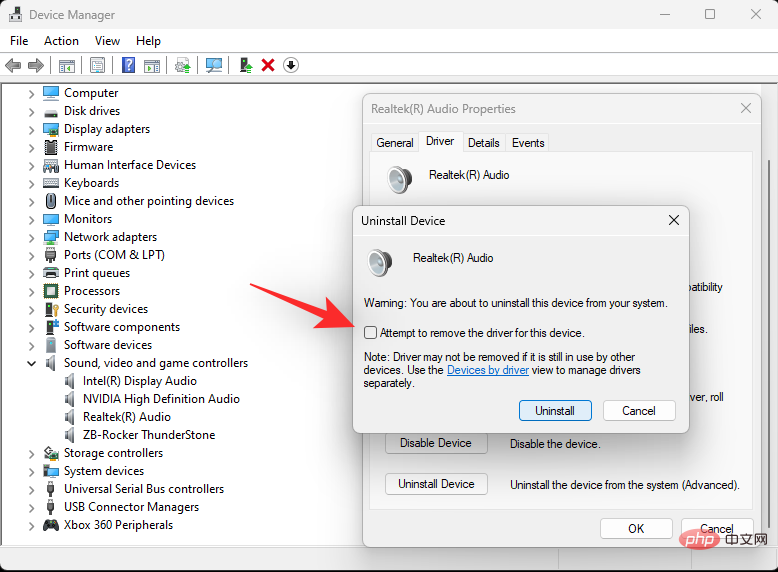
Click "Uninstall" when finished.
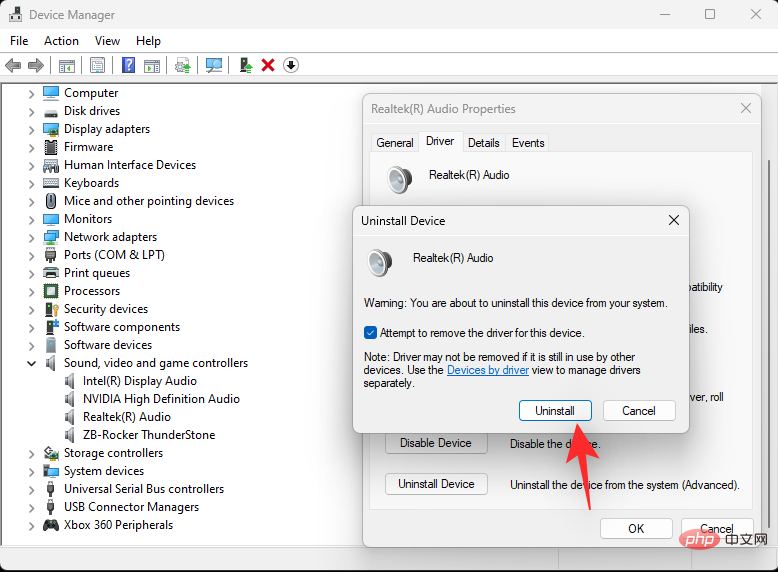
We now recommend that you reboot your system. This will force Windows to use the default OEM driver on startup, just in case. This will help reset the audio and fix the problem on most systems, but if you need to manually reinstall the driver, open Device Manager again and click Scan for Hardware Changes at the top.
Your audio adapter should now be automatically recognized and added to your Device Manager.
2.2 – Rolling Back the Audio Driver
When rolling back the driver to a previous version, you can follow the tutorial above until you enter the Device Manager in Windows Driver tab for your sound adapter. There, click "Rollback Driver".
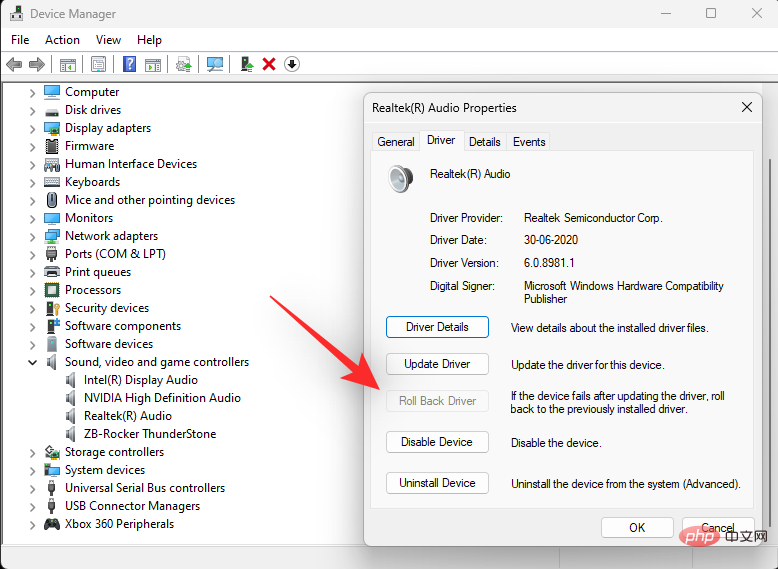
Select the reason you want to roll back and click Yes. If you are now prompted to restart your PC, we recommend that you do so as soon as possible. After restarting, your PC should use the older driver for your sound adapter.
Method 3: Restart the Windows Audio Service
Windows services manage long-running processes on your computer, such as network connections, sound, accounts, security, power, Bluetooth, and more. These services run in the background and start when your PC boots up.
The Windows services related to sound on your system are:
- Windows Audio
- Windows Audio Endpoint Generator
- Remote Procedure Call (RPC) )
Let’s see how to restart these services on Windows 11.
Press the Windows keys on your keyboard to open the Start menu.
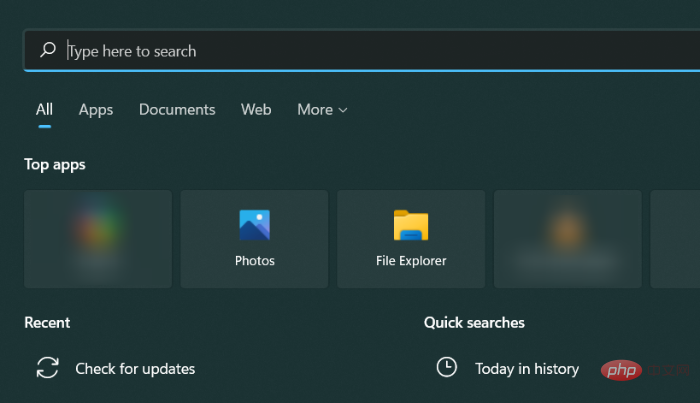
In the Start menu, search for "Services" and click on the same from the search results.

In Services, scroll down and find the "Windows Audio" service.
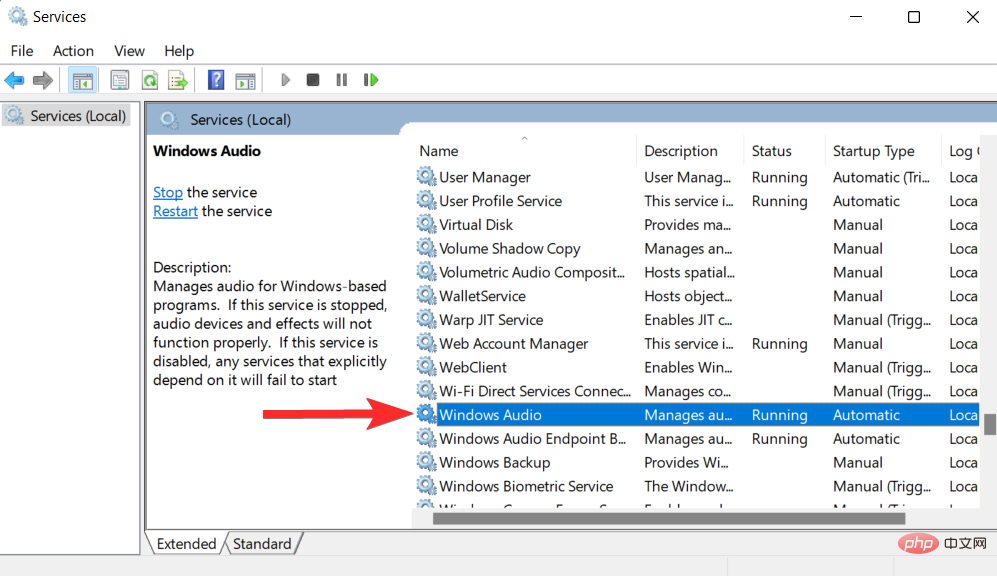
Right click on the same and click "Restart".
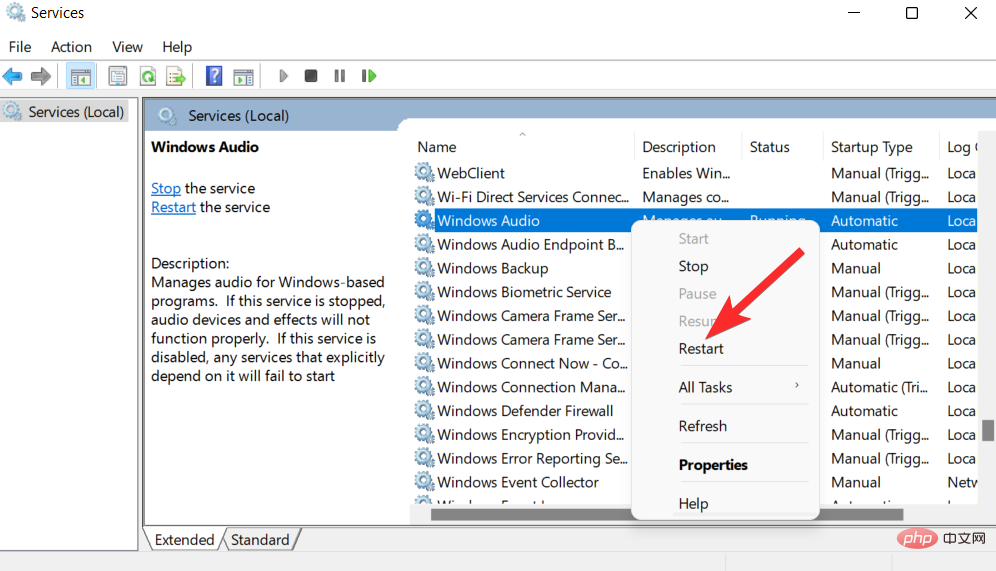
If you see a prompt similar to the one below, click Yes.
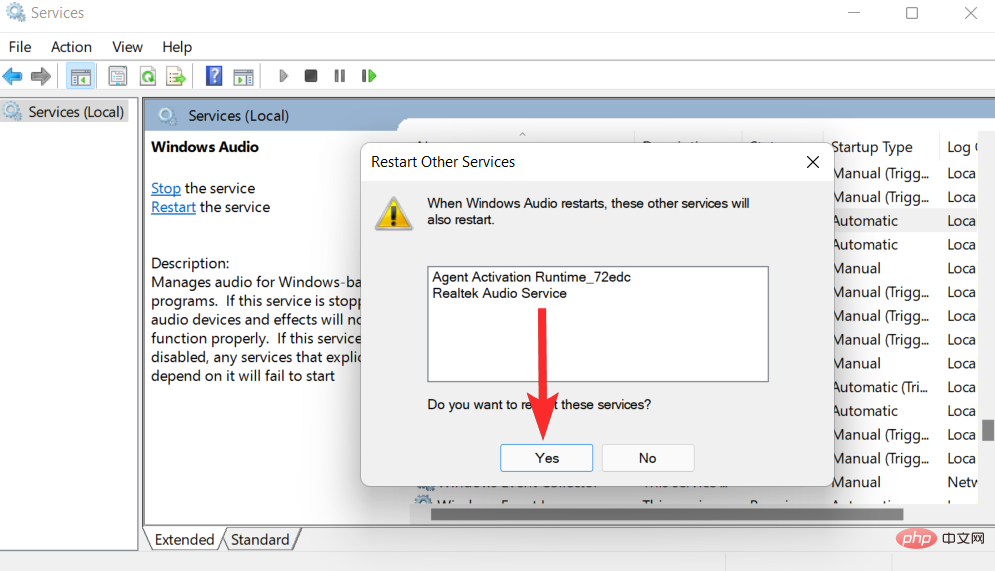
Now, repeat the above steps to restart the Windows Audio Endpoint Generator and Remote Procedure Call (RPC) services.
Method 4: Use the Windows Troubleshooter
The Windows Troubleshooter is a repair tool that helps you detect and resolve PC problems. Let’s see how you can use this tool to detect and fix audio-specific issues on your PC.
Press the Windows keys on your keyboard to open the Start menu.

In the Start menu, search for "Troubleshooting Settings" and click it from the search results.
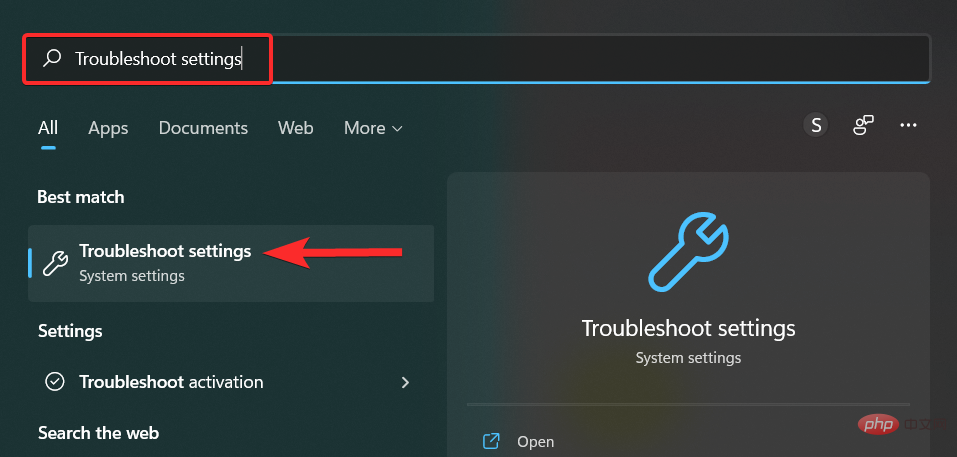
In the troubleshooting settings, click "Additional troubleshooters."
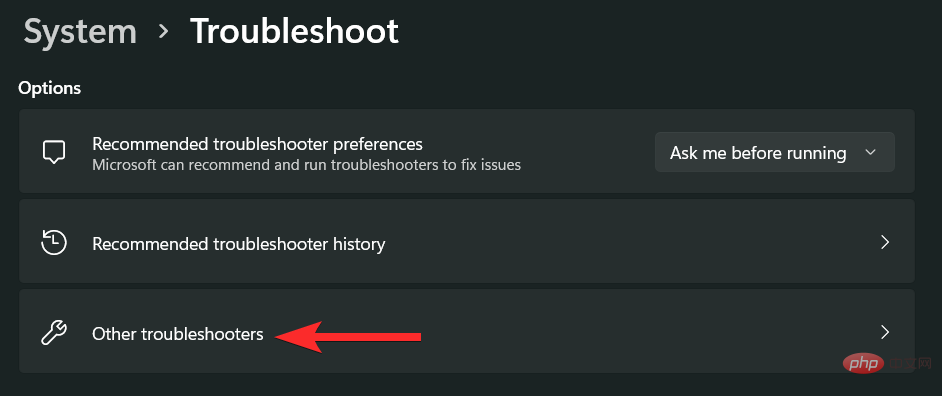
In other troubleshooters, click the Run option next to Play Audio.
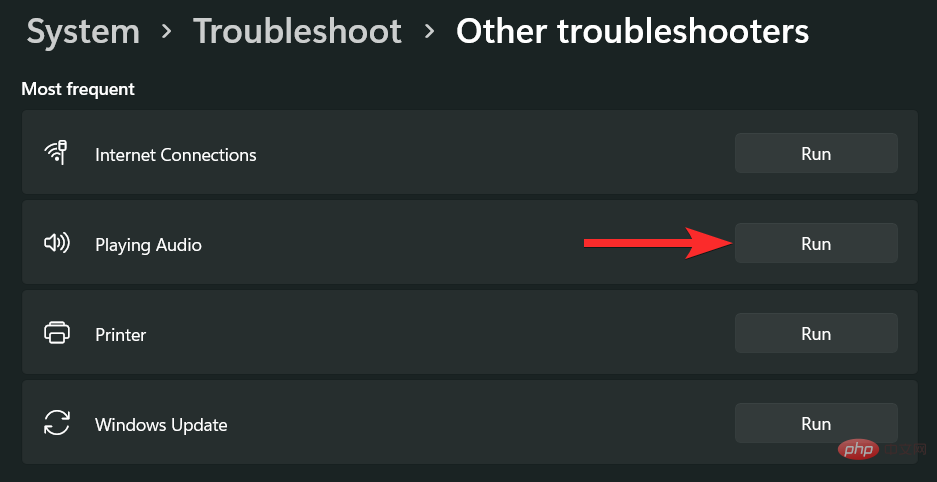
Select the audio device you want to troubleshoot and click Next. The troubleshooter will now check for problems with this audio device.

Select the repair you want to apply and click Next.
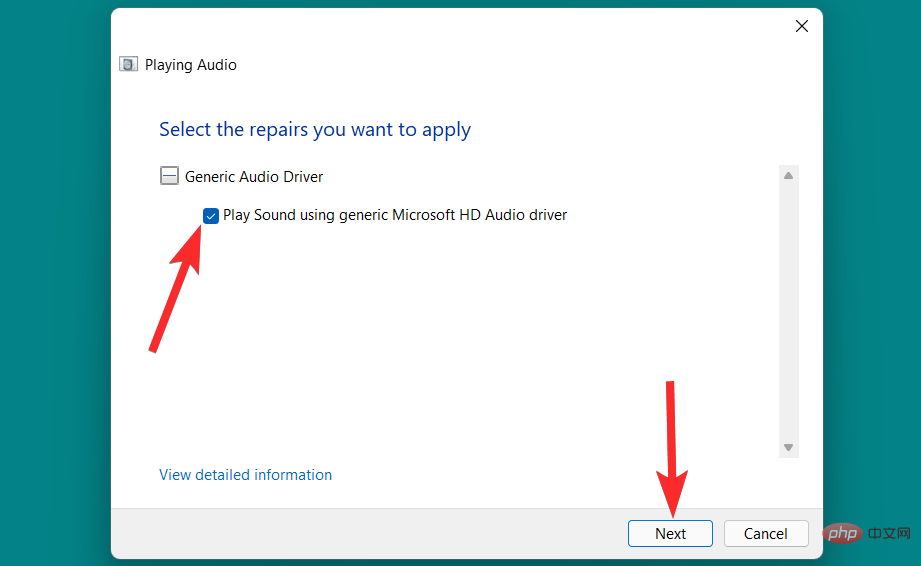
Now, follow the on-screen instructions to fix the detected issues.
Method 5: Reset system sounds to default sounds
System sounds are the sounds that apply to events in Windows and programs. Windows uses these sounds when triggering basic actions such as emergency stops, notifications, device connections, low-battery alerts, and more.
Windows 11 allows you to modify the default settings for system sounds and create custom sound schemes. However, if any issues arise and you want to restore the default sound scheme, follow the steps below.
Press the Windows keys on your keyboard to open the Start menu.

In the Start menu, search for "Change system sounds" and click on the same option from the search results.
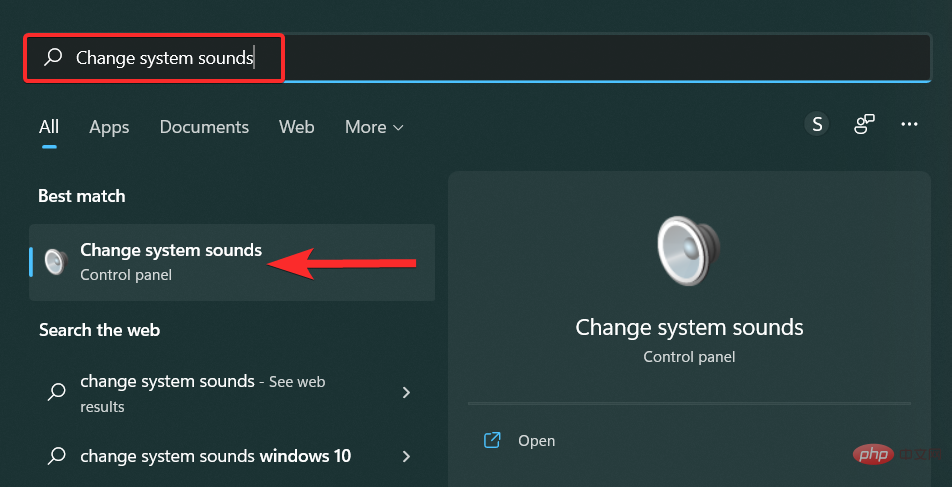
In the Sound window, click the down arrow in the Sound Scheme option, and then select Windows Default.
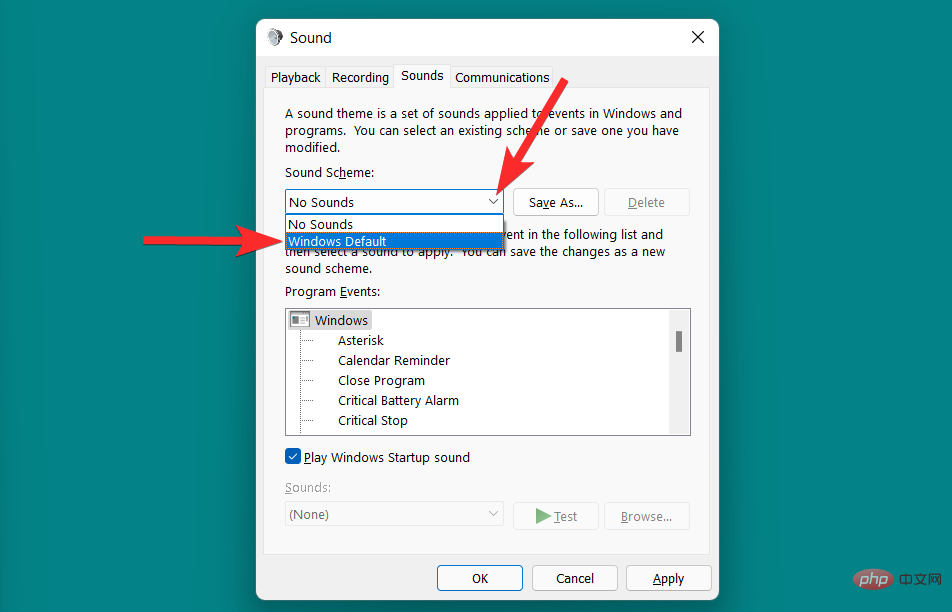
Click Apply to save your changes.
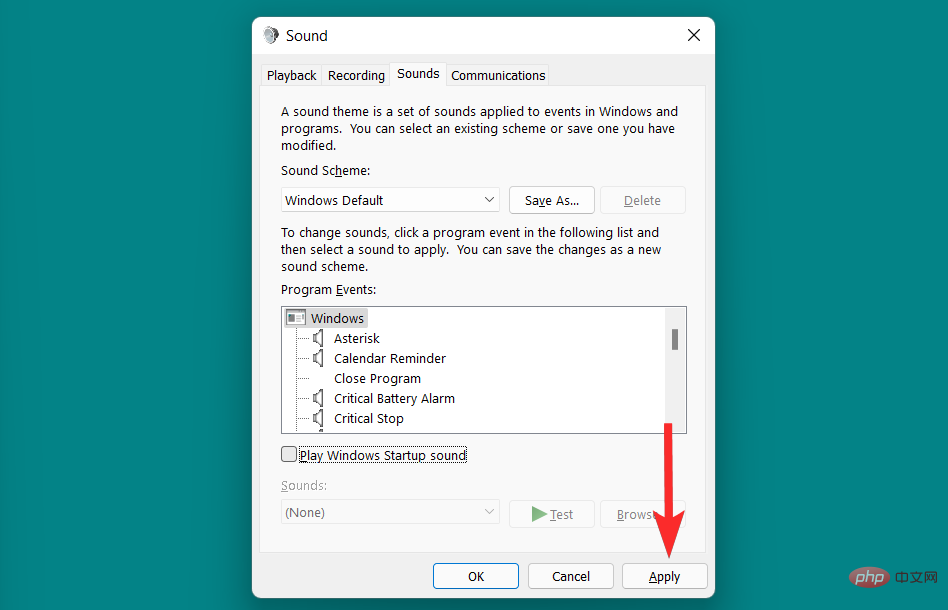
Finally, click OK to exit the Sound window.

Method 6: Last resort: Perform a factory reset
Finally, resetting Windows to its default factory state is the last way to reset all settings in your Windows 11 PC, including sound settings. This will remove all customizations and modifications made to the sound settings in Windows.
Let’s see how to do this on Windows 11.
Press the Windows keys on your keyboard to open the Start menu.

In the Start menu, search for "Reset this PC" and click the same from the search results.
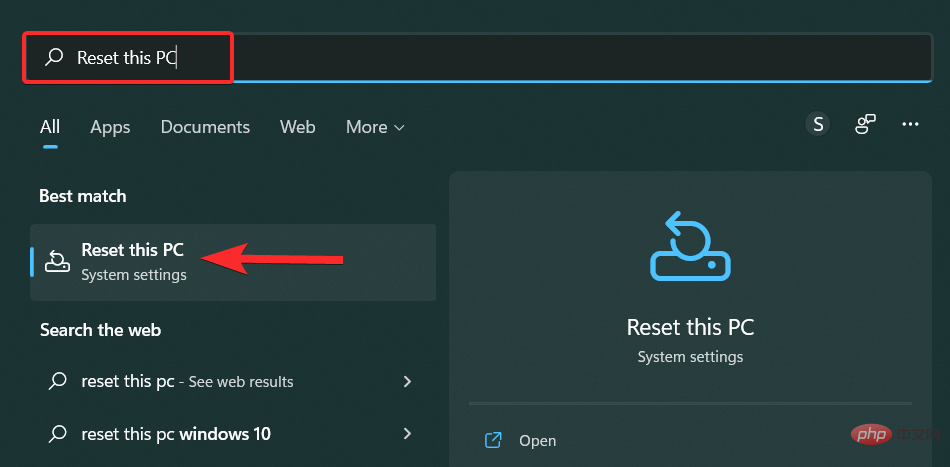
In recovery settings, click Reset this PC.

Select one of the options below and follow the on-screen instructions to reset your PC.
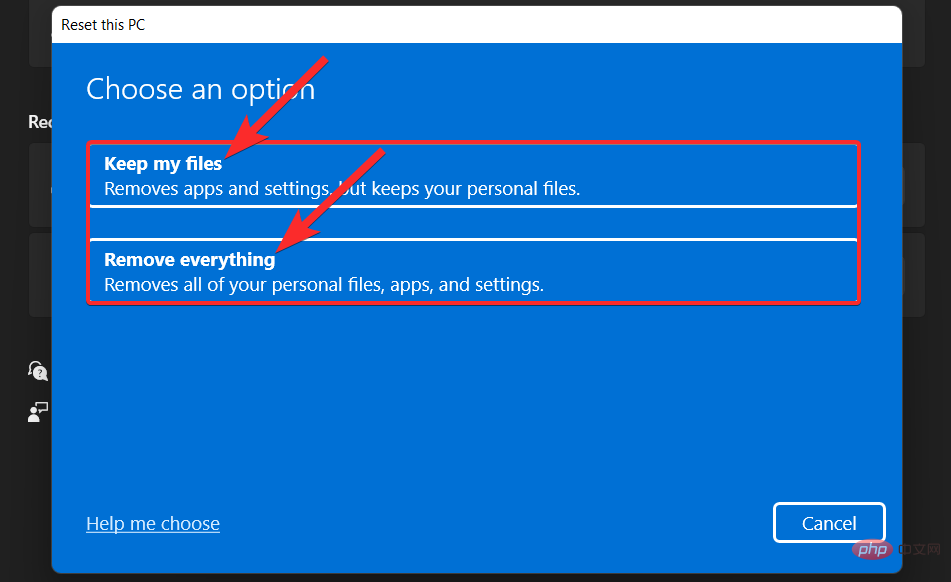
Configuring Audio on Windows 11 (3 Ways)
If you are looking to configure an audio device, then you can do that on Windows 11 . This can help you troubleshoot audio issues while configuring the device in third-party applications.
1. Change audio output and input devices (2 ways)
If you wish to route the input or output audio through another device, you can use one of the following tutorials.
1.1 – Change Output Device
Click the “Audio” icon located in the lower right corner of the taskbar.
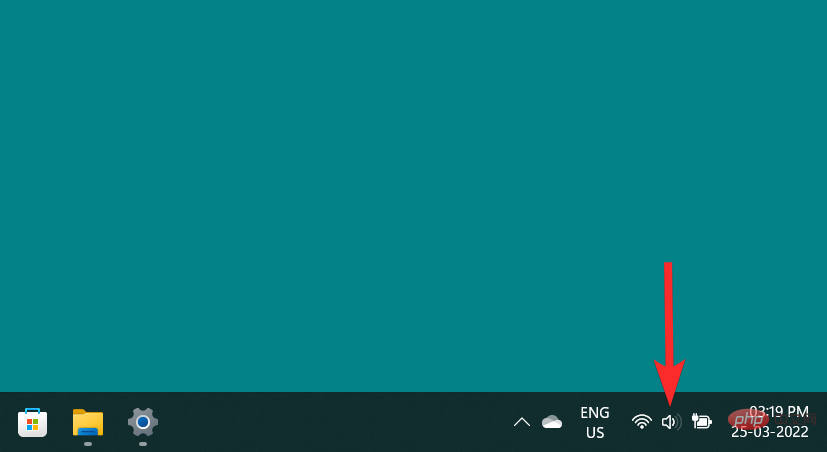
Click the ">" icon next to the volume search bar.

#From the audio device list, click the device you want to use as the output device.
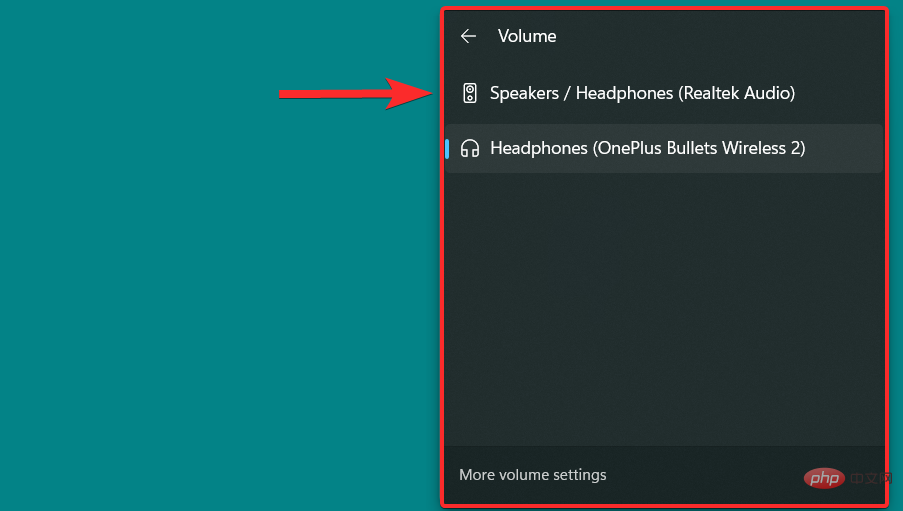
1.2 – Changing Input Devices
If you want to change the input devices on your PC, follow the steps below.
Press Windows iyour PC and click "Sound" on the right.

Scroll down and click to select your preferred input device under "Choose a device for speaking or recording."
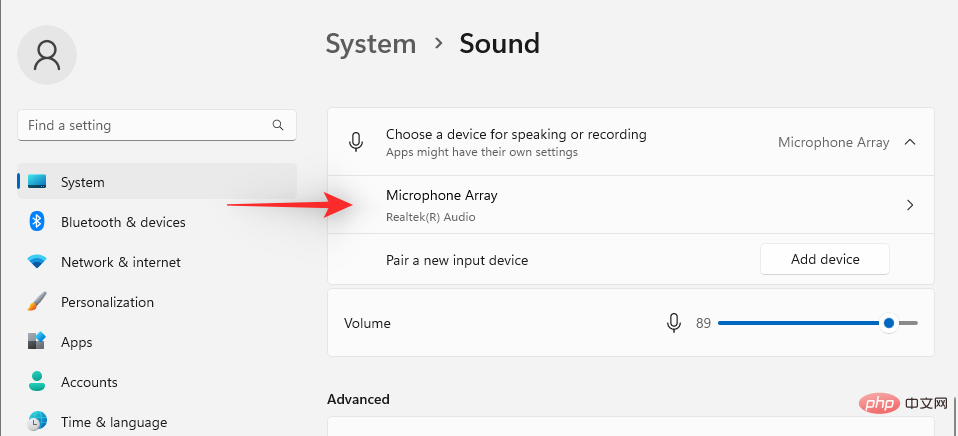
That's it! You will now change the default input device on your PC.
2. Configure sound settings (2 ways)
Here's how to configure sound settings for output or input devices on Windows 11.
2.1 – For output devices
Click the “Audio” icon located in the lower right corner of the taskbar.
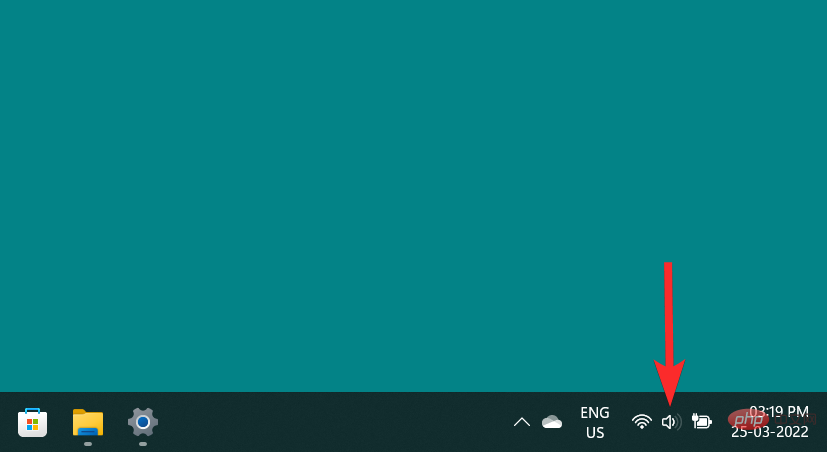
Click the ">" icon next to the volume search bar.

Click on the "More Volume Settings" option.

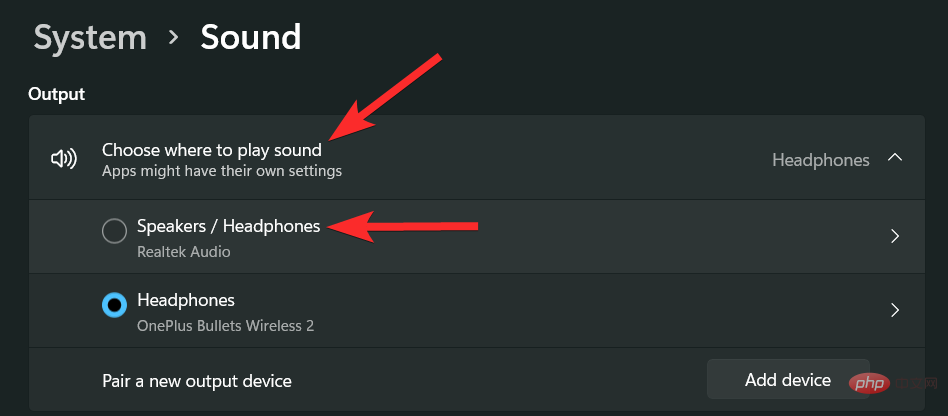
You can now view various sound settings for your selected output device in this window. Let's look at each sound setting one by one.
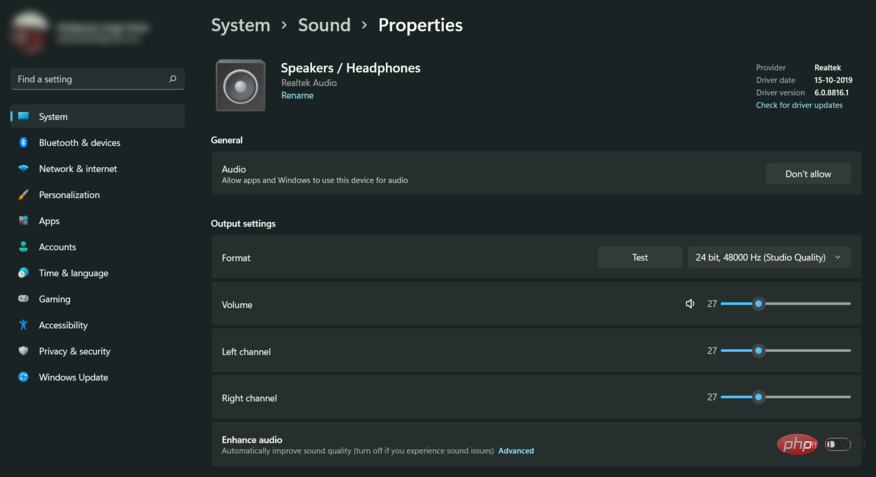
To stop using this device as an output audio device, click "Do not allow"

To change Audio format, click the Down Arrow icon.
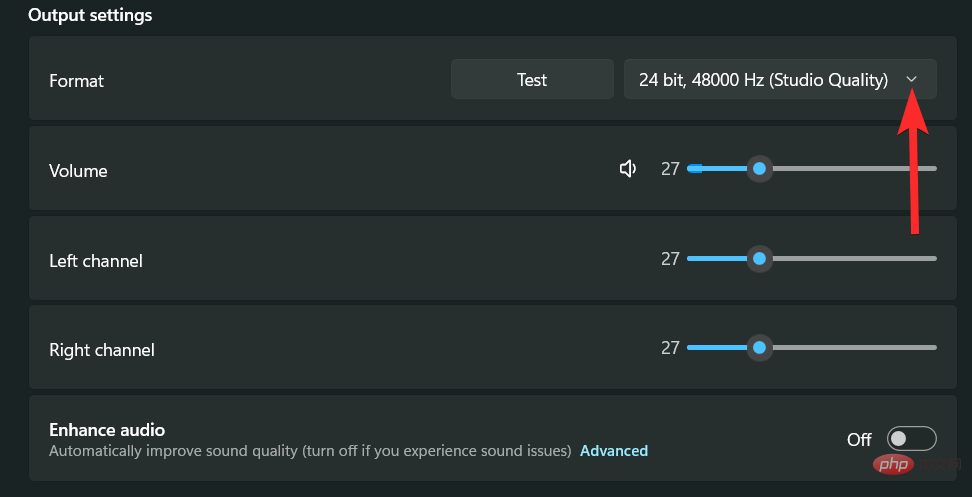
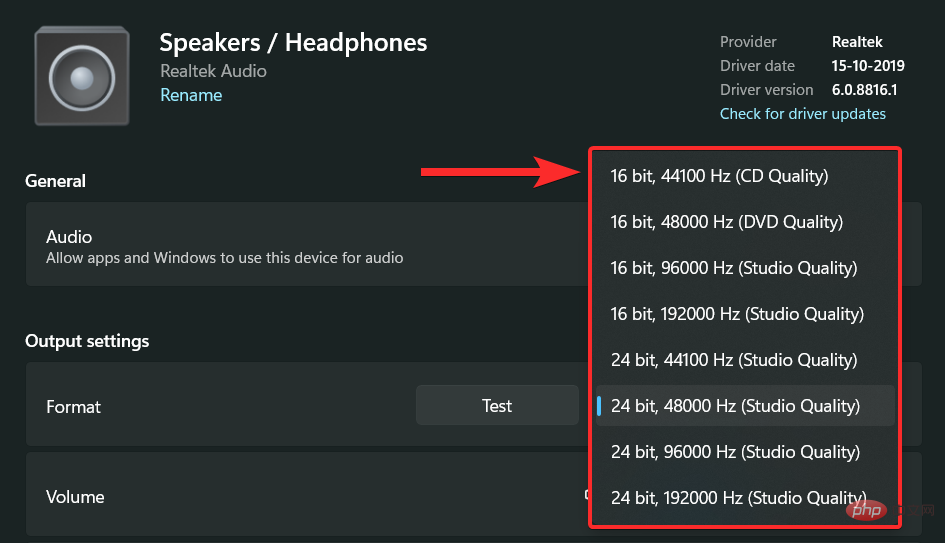
To increase the volume, drag the volume search bar next to the Volume option to the right. To lower the volume, drag the search bar to the left.
NOTE: Changing this volume will also change the Left and Right volumes to the same level. Additionally, you can change the volume of an audio device even if the device is not currently in use.

You can also change the left and right channels independently. To do this, simply drag the volume search bar corresponding to the channel you want to change.
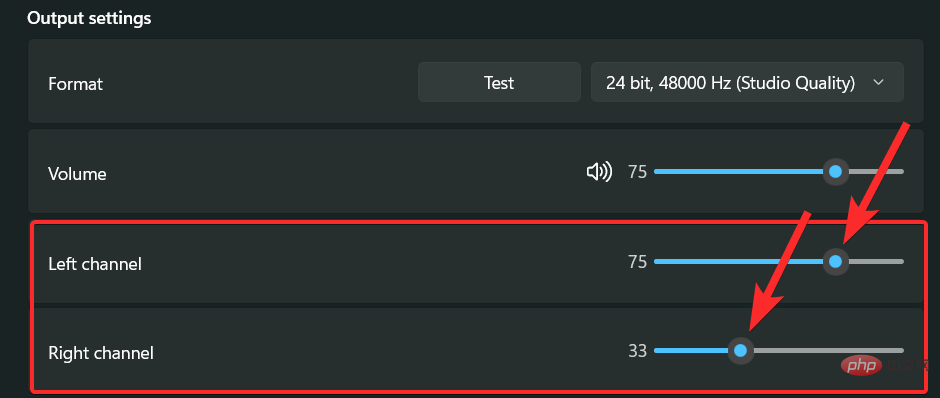
To enable enhancements, click the Enhanced Audio toggle button.
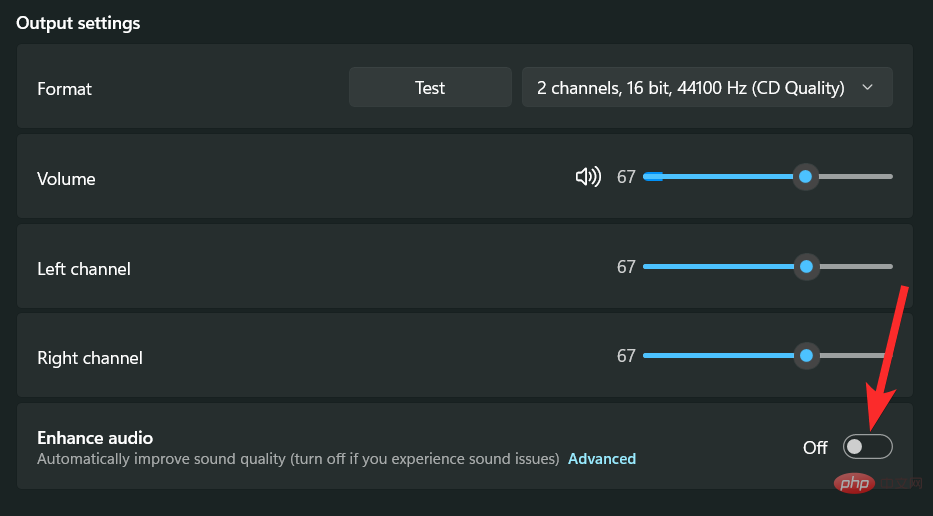
When enabled, the toggle button will display an "on" state

Windows 11 also offers a more immersive An audio experience that uses 3D spatial sound to simulate the real environment.
To enable it, click the "Down" arrow next to the "Type" option under the "Spatial Sound" section.

Click on the "Windows Sonic for Headphone" option.
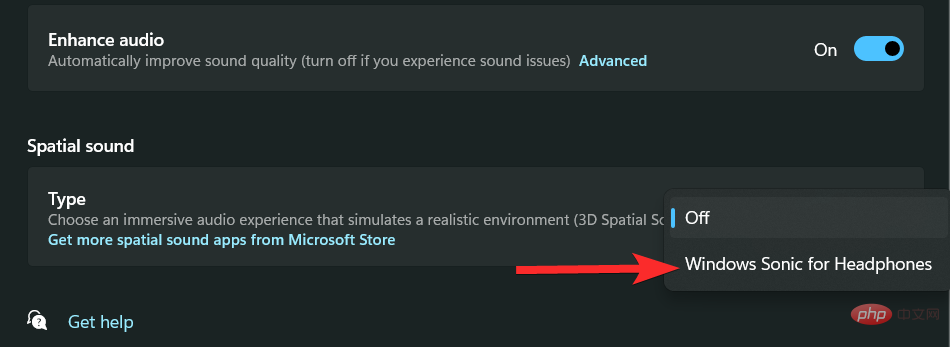
2.2 - For Input Devices
Press Windows iKeyboard and click "Sounds" on the right.

Now click on the preferred input device under "Select a device for speaking or recording" to view its properties.

You can now block devices by clicking "Don't Allow".
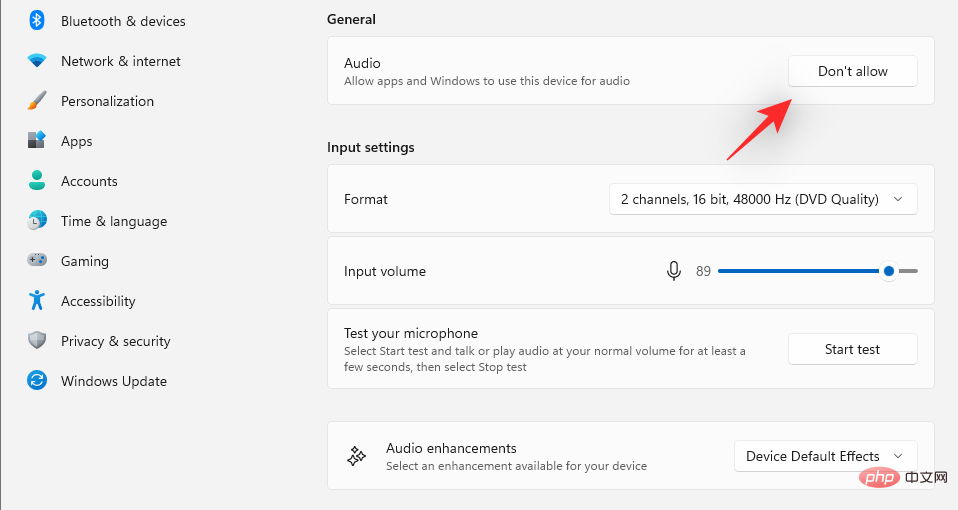
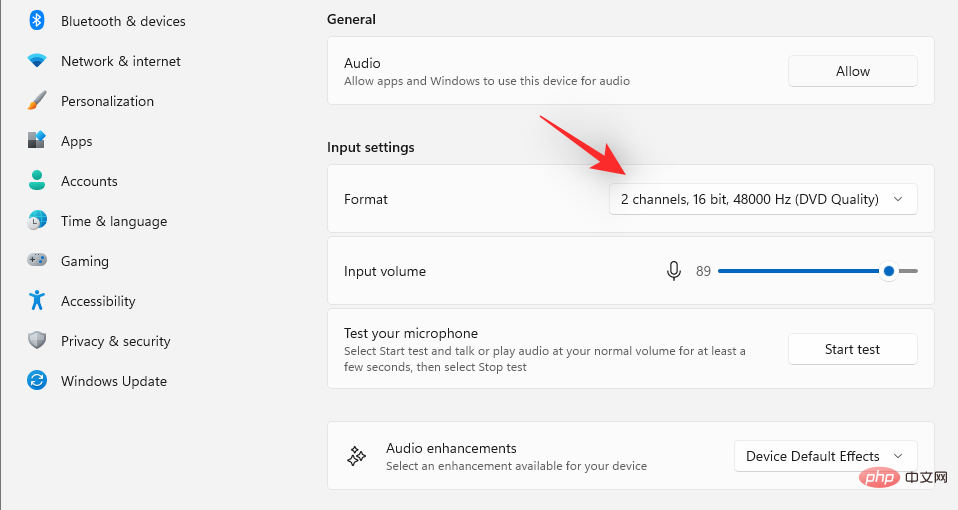
You can also use the next slider to control the universal input volume.
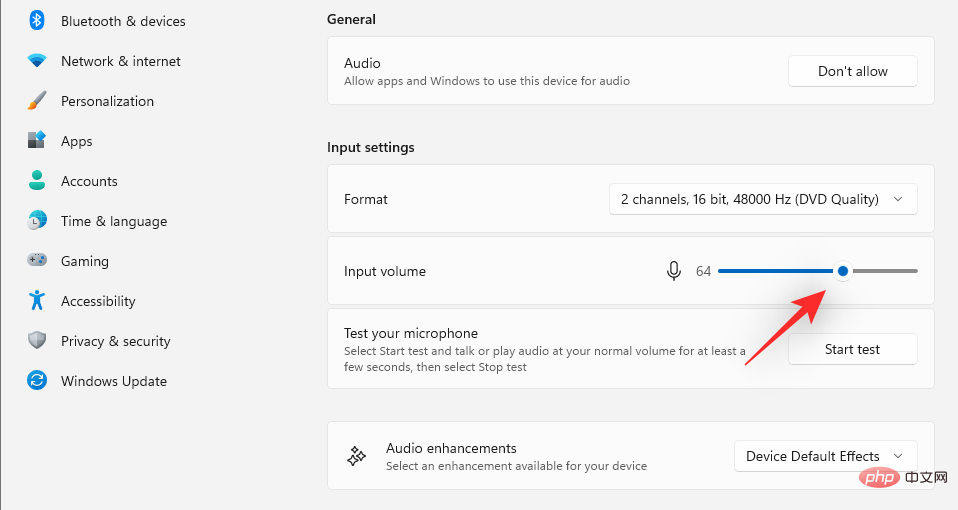
If your adapter or microphone supports it, you will be able to see the "Audio Enhancement" section. Click the same drop-down menu and select your preferred enhancement option.
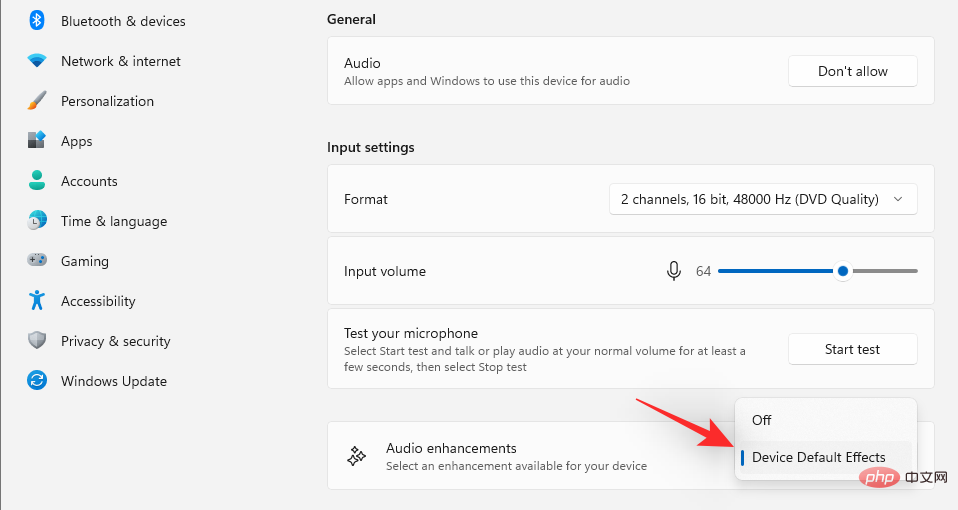
This is how you can configure input devices on Windows 11.
3. Switch mono audio
Here’s how to switch mono and stereo audio on your device.
Mono sound is used to record and playback sound in a single audio channel, while stereo sound can use two audio channels and create a feeling of width and spatial awareness in the listener . Let’s see how to switch between two playback modes on Windows 11.
Press the Windows keys on your keyboard to open the Start menu.

In the Start menu, search for "Mono Sound" and click it from the search results.
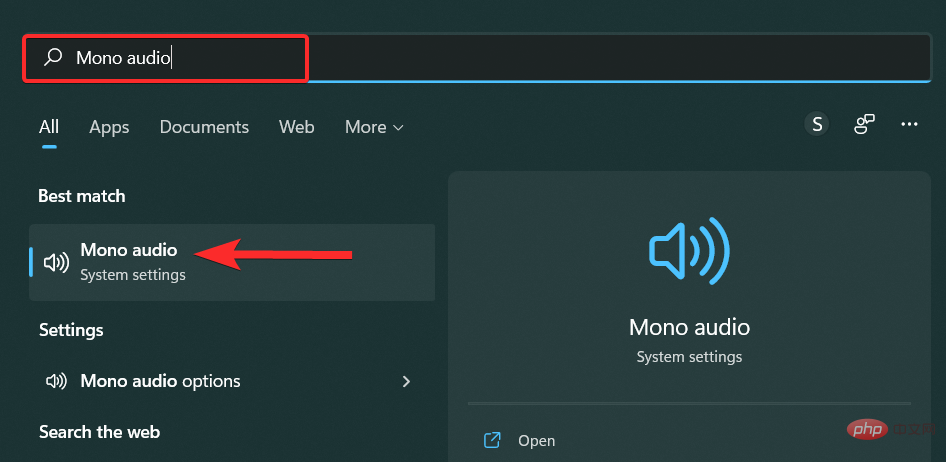
Now, if you want to enable mono audio on your PC, click on the “Mono Audio” toggle button.
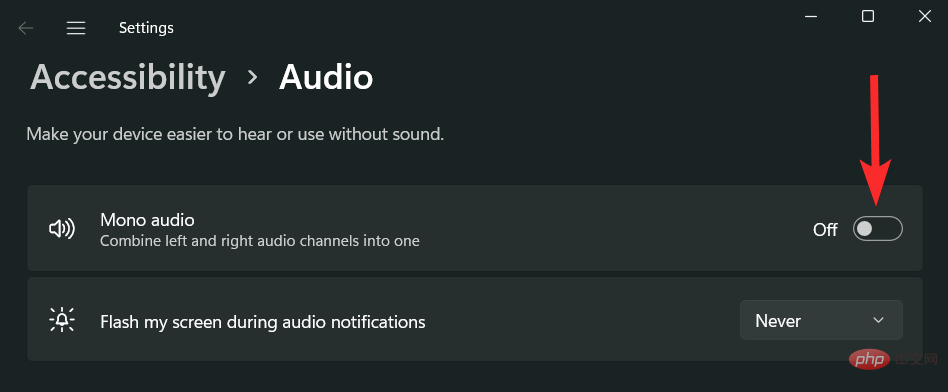
When enabled, the toggle button will read "On".
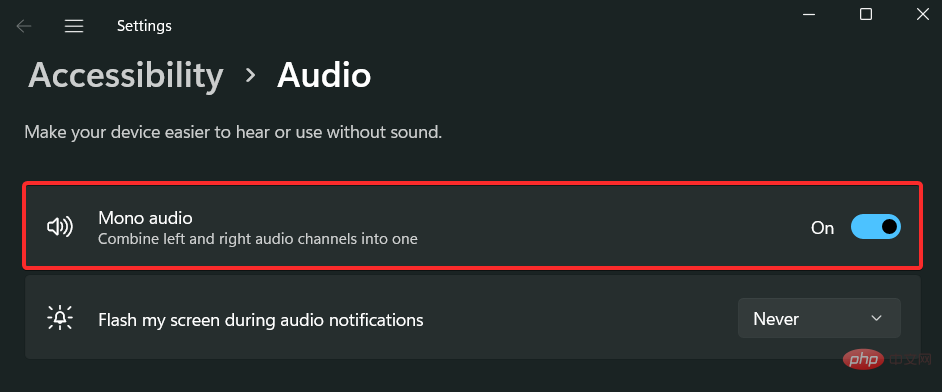
If you want to disable mono audio, click the Mono Audio toggle button.
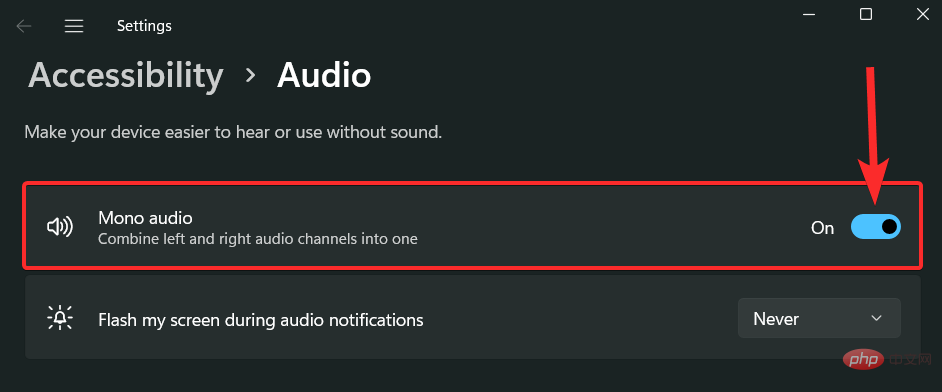
Once disabled, this toggle button will display "Off".

The above is the detailed content of Here are 6 easy ways to reset your Windows 11 sound settings. For more information, please follow other related articles on the PHP Chinese website!

Hot AI Tools

Undresser.AI Undress
AI-powered app for creating realistic nude photos

AI Clothes Remover
Online AI tool for removing clothes from photos.

Undress AI Tool
Undress images for free

Clothoff.io
AI clothes remover

Video Face Swap
Swap faces in any video effortlessly with our completely free AI face swap tool!

Hot Article

Hot Tools

Notepad++7.3.1
Easy-to-use and free code editor

SublimeText3 Chinese version
Chinese version, very easy to use

Zend Studio 13.0.1
Powerful PHP integrated development environment

Dreamweaver CS6
Visual web development tools

SublimeText3 Mac version
God-level code editing software (SublimeText3)

Hot Topics
 How to disable driver signature enforcement in Windows 11
May 20, 2023 pm 02:17 PM
How to disable driver signature enforcement in Windows 11
May 20, 2023 pm 02:17 PM
Microsoft has built several security features into Windows to ensure your PC remains secure. One of them is driver signature enforcement in Windows 11. When this feature is enabled, it ensures that only drivers digitally signed by Microsoft can be installed on the system. This helps most of the users to a great extent as it protects them. But there is a downside to enabling driver signature enforcement. Suppose you find a driver that works for your device, but it is not signed by Microsoft, although it is completely safe. But you won't be able to install it. Therefore, you must know how to disable driver signing in Windows 11
 How to fix Windows 11 activation error 0xc004c060
May 17, 2023 pm 08:47 PM
How to fix Windows 11 activation error 0xc004c060
May 17, 2023 pm 08:47 PM
Why am I encountering Windows 11 activation error 0xc004c060? First make sure you are using genuine Windows and that the license key is valid. Also, check if it was obtained from an official source and if the key is suitable for the installed OS version. If there is an issue with any of these, you may encounter Windows 11 activation error 0xc004c060. So be sure to verify these and if you find everything is in order, move on to the next section. If you obtained the key through unreliable means or believe that the installed copy is a pirated version, you will need to purchase a valid key from Microsoft. In addition to this, misconfigured settings, missing
 0x80010105: How to fix this Windows update error
May 17, 2023 pm 05:44 PM
0x80010105: How to fix this Windows update error
May 17, 2023 pm 05:44 PM
Microsoft regularly releases Windows updates to improve functionality or increase the security of the operating system. You can ignore some of these updates, but it's important to always install security updates. While installing these updates, you may encounter error code; 0x80010105. An unstable connection usually causes most update errors, and once the connection is reestablished you're good to go. However, some require more technical troubleshooting, such as the 0x80010105 error, which is what we will see in this article. What causes WindowsUpdate error 0x80010105? This error may occur if your computer has not been updated in a while. Some users may have permanently disabled W for their reasons
 How to disable display scaling for high DPI settings in Windows 11 or 10
May 22, 2023 pm 10:11 PM
How to disable display scaling for high DPI settings in Windows 11 or 10
May 22, 2023 pm 10:11 PM
The default display scaling feature on Windows 10 or later is a core component of the Windows operating system. But sometimes, this feature of certain apps can cause compatibility issues, unreadable text, blurry logos, and ultimately, app crashes. This can be a huge headache if you're dealing with 2160p or higher resolutions. There are many ways to disable the default display scaling feature on high DPI settings. We've selected the best ones and detailed step-by-step instructions for each process. How to Disable Display Scaling on High DPI Settings There is a way, all you have to do is disable high DPI scaling for a single application, and there is a way to do it for the entire Window
 How to disable core parking on Windows 10
May 16, 2023 pm 01:07 PM
How to disable core parking on Windows 10
May 16, 2023 pm 01:07 PM
If you are a Windows user and want to disable the core parking functionality in your system, this article will guide you through the process. What is core parking? The core parking function is a power saving mechanism. It puts some of your processors into a sleep mode that doesn't perform any tasks and consumes very little or no power. This helps reduce energy consumption and therefore heat in the system. These cores are unparked when needed. Few users need to disable this feature, especially gamers. Disabling this feature will improve your system performance. Disable Windows Core Parking using Windows Registry Editor Step 1: Use Windows + R keys simultaneously to open the run prompt. Step 2: At the run prompt
 5 Ways to Disable Delivery Optimization Service in Windows
May 17, 2023 am 09:31 AM
5 Ways to Disable Delivery Optimization Service in Windows
May 17, 2023 am 09:31 AM
There are many reasons why you might want to disable the Delivery Optimization service on your Windows computer. However, our readers complained about not knowing the correct steps to follow. This guide discusses how to disable the Delivery Optimization service in a few steps. To learn more about services, you may want to check out our How to open services.msc guide for more information. What does Delivery Optimization Service do? Delivery Optimization Service is an HTTP downloader with cloud hosting solution. It allows Windows devices to download Windows updates, upgrades, applications and other large package files from alternative sources. Additionally, it helps reduce bandwidth consumption by allowing multiple devices in a deployment to download these packages. In addition, Windo
 NET HELPMSG 3774: How to fix this error in 5 steps
May 17, 2023 pm 09:27 PM
NET HELPMSG 3774: How to fix this error in 5 steps
May 17, 2023 pm 09:27 PM
Many of our readers have encountered error code NETHELPMSG3774 when trying to create a new user account through the command prompt. The error states that the user was successfully created but could not be added to the USERS local group. Why do I receive the NETHELPMSG3774 error code? If you receive error code NETHELPMSG3774 when trying to create a user account on your Windows PC, it may be due to one or more of the following reasons. Incomplete Windows Installation – If Windows was not installed correctly, or the installation process was interrupted, the NETHELPMSG3774 error may occur during user account creation. Corrupted user profile – if
 How to Fix Error Code 1132 in Zoom on Windows PC
May 30, 2023 am 11:08 AM
How to Fix Error Code 1132 in Zoom on Windows PC
May 30, 2023 am 11:08 AM
Zoom's video conferencing capabilities have made it popular among users while working from home. Many Zoom desktop client users have reported seeing error code 1132 along with an “Unknown error has occurred” message on their Windows PCs. Usually, this error code pops up when users try to log into their account and join any meeting in Zoom. In the error window, the user has the option to open a browser and join the meeting. However, some users reported that they were unable to open the meeting even on the browser. Windows firewall settings, outdated Zoom installation, or Zoom blacklisting your account could be some of the possible reasons for this error. Are you encountering an error code while using the Zoom app





